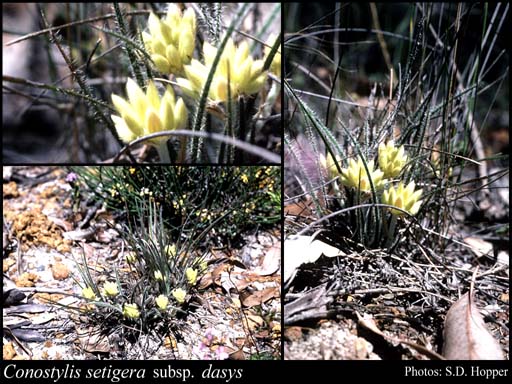- Reference
- Fl.Australia 45:463 (1987)
- Conservation Code
-
Threatened
A taxon name retains its ‘Threatened’ status until a new name has been officially endorsed and appears in the Gazettal Notice.
- Naturalised Status
- Native to Western Australia
- Name Status
- Current
Rhizomatous, tufted perennial, grass-like or herb, 0.15-0.3 m high. Fl. yellow/red, Oct to Nov. Sand, gravel, laterite.

Scientific Description
Leaves elliptical (leaves compressed), 140-260 mm long, 0.7-1.5 mm wide; bristles or hairs on the leaf margin present, 0.4-3.5 mm long, with at least some small side branches at the base, flexuose and soft, angled towards the leaf apex; hairs on the surface of the leaf absent (leaf surfaces glabrous). Scape present, hairy, 60-155 mm long. Inflorescence subtended by a bract 10-13 mm long, with several flowers; floral bracts 6.5-8 mm long; pedicels present, 1-3 mm long; flowers 10-14 mm long. Perianth hairy, radially symmetrical, uniformly coloured or suffused with a darker colour over the base colour, yellow, with six more or less equal tepals, the inner segments 9-9.5 mm long. Stamens six, in two levels alternating; filaments 2.5-3 mm long; anther 3.2 mm long, without an appendage. Style 9-10 mm long. Flowers in October or November. Occurs in the Jarrah Forest IBRA bioregion(s), of the South-west Botanical Province. Conservation Code Threatened (T).
Distribution
- IBRA Regions
- Jarrah Forest.
- IBRA Subregions
- Southern Jarrah Forest.
- Local Government Areas (LGAs)
- Kojonup, Woodanilling.